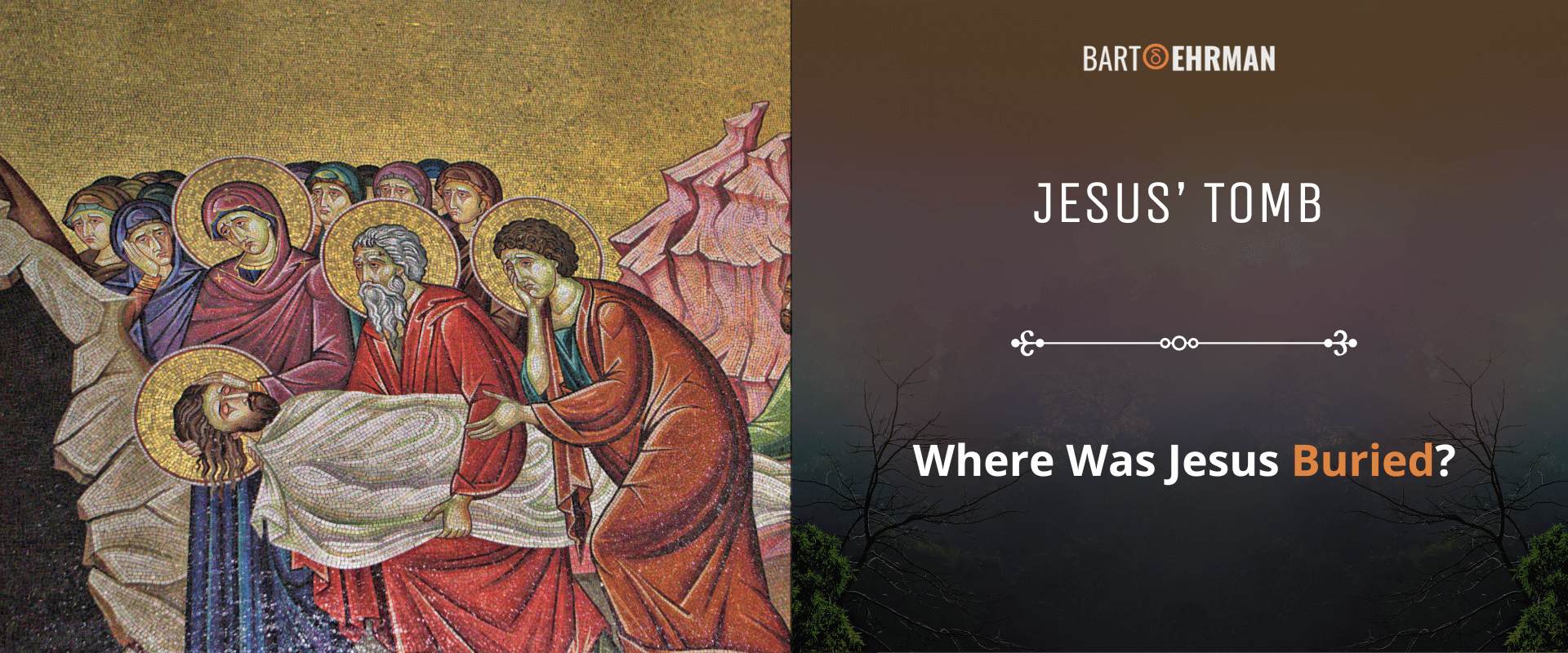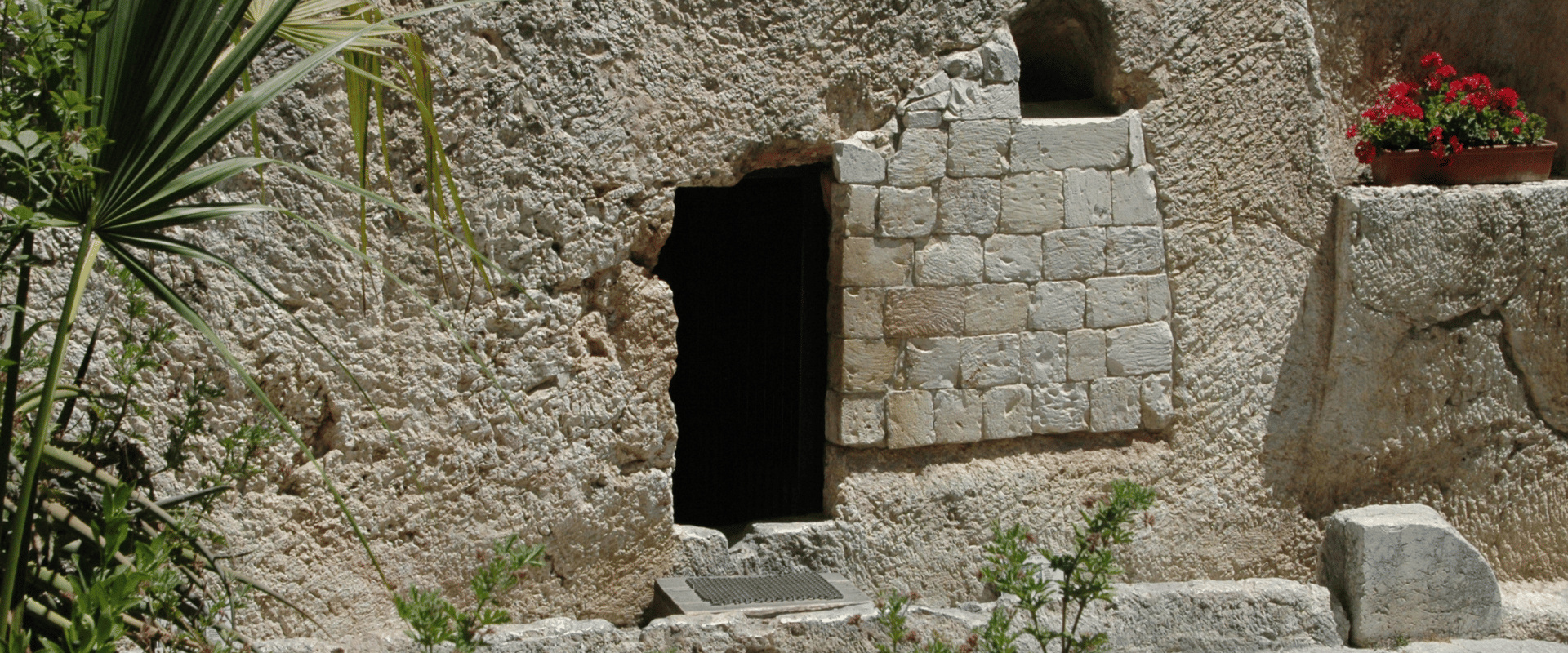Jesus’ Tomb: Where was Jesus Buried?

Written by Marko Marina, Ph.D.
Author | Historian | BE Contributor
Verified! See our guidelines
Verified! See our editorial guidelines
Date written: March 29th, 2024
Disclaimer: The views and opinions expressed in this article belong to the author and do not necessarily match my own. - Dr. Bart D. Ehrman
In my class on the history of the Roman Empire, I annually navigate the traditions and nuances of Roman burial practices with my students. This exploration, grounded in the latest archaeological evidence and scholarly discourse, illuminates the diverse ways Romans commemorated their dead.
Yet, amid these discussions, a singular question invariably emerges, transcending the broader scope of our study to focus on the burial of one individual whose historical footprint has shaped millennia: Jesus of Nazareth.
The query of Jesus' tomb not only captivates the academic curiosity of my students but also encapsulates one of the most important episodes in the history of Christianity.
This recurrent question underscores the enduring fascination and complexity surrounding the final resting place of Jesus, prompting a deeper investigation beyond the confines of my lecture hall. It beckons a journey through ancient texts and the rugged landscapes of archaeology to piece together a narrative obscured by time yet profoundly significant.
This article aims to unravel the historical threads of Jesus' grave, navigating through the earliest sources, the Synoptic Gospels, and delving into the archaeological vestiges of first-century Jerusalem.
By embarking on this scholarly endeavor, we seek not only to illuminate the historical facts but also to understand their implications within the broader tapestry of religious and historical scholarship.
But before we delve into the intriguing question of Jesus' tomb, seize the opportunity to explore "Jesus the Secret Messiah," an enlightening 8-lecture online course by renowned scholar of early Christianity, Bart D. Ehrman. Dr. Ehrman intricately unpacks The Gospel of Mark, showcasing its narrative subtleties and the unexpected twists that mark it as a seminal piece of literature in the early Christian tradition.

The Earliest Sources on Jesus’ Tomb: A Brief Overview
The New Testament Gospels stand as our principal sources for understanding the life and death of Jesus of Nazareth, including the narratives surrounding Jesus' tomb. These texts, written in the first century C.E., provide invaluable insights into the historical Jesus and the early Christian movement.
However, their use as historical sources has challenges and complexities. Scholars acknowledge several key issues that necessitate a cautious and critical approach to these documents.
Despite these challenges, the Gospels remain an invaluable tool for finding more about Jesus’ life. Through rigorous scholarly examination and critical analysis, it’s possible to extract historical kernels that likely reflect the actual events of his life, including the circumstances of Jesus’ burial and the story behind Jesus’ tomb.
With these considerations in mind, we’ll now proceed to give a concise overview of Jesus' burial as described in the Synoptic Gospels.
The Synoptic Tradition on Jesus’ Tomb and Burial
Following Jesus' death on the cross, a dignified burial unfolds within the pages of the Synoptic Gospels, presenting a coherent narrative marked by both commonalities and unique details. Central to these accounts is Joseph of Arimathea, a figure who emerges with respect and courage.
Described as a member of the council, he is portrayed across these texts as seeking Pilate's permission to take Jesus' body for burial. This act of piety and respect, notably divergent from the typical treatment of crucified individuals, underscores the different nature of Jesus' burial.
The Gospels converge on the depiction of Jesus' tomb as a new tomb, hewn out of rock, signifying not only the haste due to the impending Sabbath but also the fulfillment of Jewish burial customs. This tomb, provided by Joseph, becomes the solemn setting for Jesus' interment.
The narratives detail the careful preparation of Jesus' body, its placement within the tomb, and the sealing of the tomb with a stone. These elements, while grounded in historical burial practices, are imbued with theological significance, illustrating the Gospels' dual role as sources of both historical information and religious messages.
This concise overview, rooted in the Synoptic Gospels, offers a glimpse into the burial rites, framing Jesus' tomb within the cultural and religious practices of the time. While each Gospel presents its account with slight variations, the essence of the burial narrative—marked by respect, Joseph of Arimathea, and an unexpected tomb—remains a central facet in the traditional narrative of Jesus' death.
As we delve deeper into the historical and archaeological contexts, these Gospel narratives provide a foundational understanding of Jesus' final resting place, setting the stage for further exploration of Jesus' tomb and its significance in both ancient and modern inquiries.
FREE COURSE!
WHY I AM NOT A CHRISTIAN
Raw, honest, and enlightening. Bart's story of why he deconverted from the Christian faith.
Over 6,000 enrolled!
Jesus’ Tomb in the Light of the Archaeological Insights
In ancient Jerusalem, the burial practices and types of tombs varied significantly across different social strata, highlighting the intersection of wealth, social status, and funerary customs within Jewish society. The wealthy members of society, including prominent Jewish families, were often buried in rock-cut tombs.
These family tombs, hewn directly from the limestone bedrock surrounding Jerusalem, were not merely places for the dead to rest; they were elaborate, multi-chambered structures designed to serve multiple generations, embodying both the familial connections and the social status of the occupants.
Did You Know?
In a fascinating intersection of archaeology and biblical history, scholars have unearthed direct evidence of crucifixion from the ancient world, a rare find that illuminates the grim reality behind the practice often mentioned in historical texts.
In 1968, an excavation in Giv'at ha-Mivtar, Jerusalem, revealed the remains of a crucified man, dating back to the first century CE. This discovery was groundbreaking; the individual's heel bone was found with a nail still embedded, offering a stark testament to the brutal method of execution described in the New Testament. This find not only provides tangible evidence of crucifixion as a form of capital punishment in the Roman Empire but also brings a new dimension to our understanding of historical texts, including the accounts of Jesus' crucifixion.
Such tombs allowed for the practice of secondary burial, where bones were eventually gathered into ossuaries, making room for new burials—a process reflecting deep-seated beliefs about death, memory, and family legacy.
This tradition of rock-cut tombs, epitomized by discoveries such as the Tomb of the Kings, the Tomb of the Prophets, and the Herodian family tombs, showcases the architectural and artistic endeavors that the elite invested in their final resting places.
Contrastingly, popular portrayals, such as seen in the movie "The Passion of the Christ," often depict Jesus' tomb as an easily accessible, single-chambered cave, lacking the complexity and exclusivity characteristic of the rock-cut tombs reserved for Jerusalem's elite.
However, the vast majority of Jews couldn’t afford the rock-cut tomb. As noted by archaeologist Jodi Magness: “Jesus came from a family of modest means that presumably couldn’t afford a rock-cut tomb. Had Joseph not offered Jesus a spot in his tomb (according to the Gospel accounts), Jesus likely would have been disposed of in the manner of the poorer classes: In an individual trench grave dug into the ground.”
Are you thinking about exploring what archeology can tell us about Jesus? You are in the right place! Go back in the era of Jesus with Jodi Magness in our new online course, "Archaeology in the Time of Jesus." Discover the lives of the elite and the common folk through four engaging 50-minute lessons. Join us on this journey to unearth the world that shaped the stories we know today!
This insight into Jesus' burial context underscores a significant deviation from the normative practices associated with Jewish burial traditions of the period, highlighting the extraordinary circumstances surrounding Jesus' tomb as described in the Gospels.
But how extraordinary were these circumstances, really? Was Jesus truly buried in the tomb of Joseph of Arimathea, as the Gospels suggest? Some scholars have raised serious doubts about the traditional narrative of Jesus’ tomb! Let's explore their theories and the evidence they present.
Was Jesus Placed in Joseph of Arimathea’s Tomb: Reevaluating the Historical Evidence
In the scholarly pursuit to understand the historical circumstances surrounding Jesus' burial, Bart D. Ehrman presents a thought-provoking theory that challenges traditional narratives. Ehrman points to the conspicuous absence of Joseph of Arimathea in the early Christian creed cited in 1 Cor 15:3-5, a foundational text that predates the Gospels.
He argues that if the early Christians were aware of such significant detail as the identity of the person who buried Jesus, it would surely have been included to stylistically balance the narrative, much like the specific mention of Cephas (Peter) as the first to witness the resurrected Jesus.
This omission, Ehrman suggests, indicates a lack of early consensus or knowledge about Joseph of Arimathea's role, casting doubt on the Gospel accounts that introduce him as the benefactor who provided Jesus' tomb.
Building on this foundation, Ehrman, along with scholars like John Dominic Crossan and David Aus, suggests a more grim fate for Jesus' body.
Contrary to the dignified burial described in the New Testament, both Ehrman and Crossan posit that Jesus was likely subjected to the common Roman practice reserved for criminals: his body was thrown into a shallow grave or pit, left to decompose and become prey to scavenging animals.
This perspective draws on historical practices concerning the treatment of crucified individuals, suggesting that the Romans, who were known for their utilization of crucifixion as a means of deterrence, would not have allowed for an honorable burial. Such a practice would underline the humiliation and finality of the crucifixion, leaving no place for veneration or memorialization by the followers of the condemned.
Despite these challenging viewpoints, some scholars steadfastly uphold the historicity of the Joseph of Arimathea narrative, advocating for its authenticity based on different evidence.
In the scholarly debate over the historicity of Jesus' burial by Joseph of Arimathea, Dale C. Allison and Craig C. Evans, among others, present arguments for the plausibility of such an event within the Roman and Jewish contexts of the time.
They acknowledge the common Roman practice of leaving crucified individuals exposed but argue that exceptions could have been made, especially during periods of peace in pre-70 Palestine.
According to their analysis, the situation described in the Gospel of Mark, where a burial request is granted, is within the realm of possibility, given the intersection of Roman legal practices and Jewish burial customs.
These scholars reference several sources, including Roman legal documents (Digesta), writings from Jewish historians (Philo and Josephus), and the Gospel narratives, to support the view that the burial of Jesus in a tomb is historically plausible.
Furthermore, the archaeological discovery of a crucified individual who was formally buried adds to their argument, indicating that Roman crucifixion victims could be buried under certain conditions.
Jodi Magness brings an archaeological perspective to this discussion, noting the limitations of archaeological evidence in verifying specific individuals or events described in the Gospels.
While archaeological findings can’t prove the existence of Joseph of Arimathea or that Pontius Pilate granted his request for Jesus' body, Magness points out that "the Gospel accounts describing Jesus' removal from the cross and burial are consistent with archaeological evidence."
By presenting these viewpoints, the intention isn’t to take sides but to illuminate the spectrum of scholarly opinions surrounding the circumstances of Jesus' burial. This balance allows readers to appreciate the depth of the debate and the variety of evidence and interpretations that continue to engage scholars in the field.
Having explored the diverse scholarly opinions on the circumstances of Jesus' burial, we now turn our attention to another captivating inquiry: Where is Jesus' tomb located? This next section delves into the historical and modern speculations surrounding its possible locations.

The Quest for Jesus’ Tomb: Evaluating the Church of the Holy Sepulchre and the Garden Tomb
Where was Jesus buried? This question has intrigued scholars, theologians, and the faithful for centuries, leading to a quest that blends history, faith, and archaeology. Despite the profound significance of Jesus' tomb within Christian tradition, the exact location remains shrouded in mystery.
Over the millennia, various sites in Jerusalem have been venerated as the possible location of the tomb of Jesus, each supported by layers of tradition, religious devotion, and sometimes archaeological investigation. However, the historical and archaeological evidence available doesn’t definitively pinpoint the precise spot, leaving the question open to interpretation and belief.
The most notable of these locations is the Church of the Holy Sepulchre, revered by many Christian traditions as the site of Jesus' crucifixion, burial, and resurrection. Established by Emperor Constantine in the 4th century following the alleged discovery of the True Cross by his mother, Helena, the church has stood for centuries as a monumental testament to the Christian religion.
Another location, the Garden Tomb, was proposed in the 19th century as an alternative site, with its proponents arguing for its physical resemblance to the Gospel descriptions of Jesus' tomb.
While the Garden Tomb offers a serene environment conducive to reflection and prayer, its claim as the historical site of Jesus' burial isn’t widely supported by contemporary archaeological or historical scholarship.
These sites and others proposed throughout history, speak to the enduring desire to connect physically with the events of Jesus' life and death. Yet, the precise location of Jesus' tomb eludes definitive historical or archaeological confirmation.
The Tomb of Jesus: Summary
In exploring the narratives and archaeological evidence surrounding Jesus' tomb, this article traverses the realms of ancient texts, scholarly debate, and the tangible remnants of history to illuminate the complexities and enduring mysteries of Christianity's origins.
The discussion reveals not only the deep scholarly divisions regarding the events following Jesus' crucifixion but also the profound impact of these narratives on the fabric of Christian tradition.
Despite the thorough investigations and passionate arguments presented by scholars from various disciplines, the exact location of Jesus' tomb and the precise details of his burial remain enigmatic, rooted as much in tradition as in the archaeological and historical record.
The journey through the Synoptic Gospels, the critical analysis of scholars like Bart D. Ehrman, Dale C. Allison, and Jodi Magness, and the examination of burial practices in first-century Jerusalem, all contribute to a richer, though not definitive, picture of the historical Jesus.
FREE COURSE!
WHY I AM NOT A CHRISTIAN
Raw, honest, and enlightening. Bart's story of why he deconverted from the Christian faith.
Over 6,000 enrolled!
